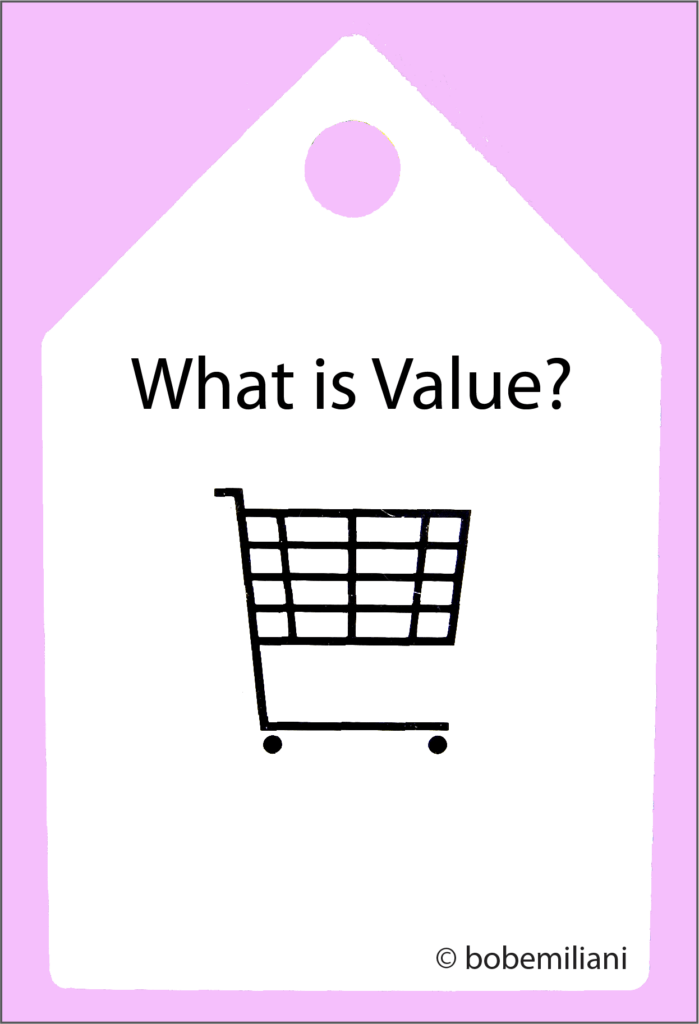
Nearly 30 years ago, the sages of Lean decided to invert the focus of Toyota’s production system (TPS) from eliminating waste (and cost reduction) to value. That might not have been a mistake then, but it surely is a mistake now. And therefore, it is time to return to the original view of TPS: customer first and cost reduction by thoroughly eliminating waste.
According to the Lean Enterprise Institute’s Lean Lexicon, value is “the inherent worth of a product as judged by the customer and reflected in its selling price and market demand.” But, when sensei Chihiro Nakao challenged kaizen participants with the question, “What is value?,” they had no answer. The kaizen participants had no contact with intermediate or end use customers, so they had no idea of their perception of value. Value is both obscure and ephemeral.
Leanophiles everywhere remain locked-in to the view that value — value from the customer’s perspective — should be the point of focus. After all, the first principle of Lean Thinking is “specify value.” But what we learn from kaizen, and not from “Lean tools,” is the meaning of value-added work. When we eliminate waste, the value-added work becomes clear; it is the work that transforms material or information.
While it may be time to return to the original view of TPS: customer first and cost reduction by thoroughly eliminating waste, will such a thing happen? Yes, in some companies, mostly small and mid-size, but probably not in big companies, and here is why.
In the business world, the focus is pricing. Meaning, find ways to charge the highest price possible, whatever the market will bear. This is nothing new. Companies have been at this for a long time. But what is new is the ability of companies to use consumer data in opaque ways to charge customers higher prices (read this great article, “Welcome to Pricing Hell,” to learn more). This is a vast new frontier that for big companies obliterates any need for Lean.
Taiichi Ohno taught us that Price – Cost = Profit and that the customer sets the price, in recognition that the automobile business is a buyers’ market. Hence the importance of reducing costs. That may have been true in the 20th century, but things have changed. Ohno’s equation is valid for a market price, for commodities such as oil or wheat, and perhaps for what the average consumer will pay for a product or service, but that is not the same as the price that the market will bear, which is usually higher. And if the market price cannot be achieved to a big company’s satisfaction in term of profit and stock price, then you get either dynamic pricing (price varies by time of day, postal code, and other factors) or unbundling of the product or service to generate numerous add-ons and options that effectively raise the market price.
The methods used for dynamic pricing and unbundling have been around for some time, but are now supercharged due to the combination of greater computing power and the vast collection of consumer data through online purchases and company-specific apps. This enables companies to differentiate between customers as lower- or higher-value, and price the product or service accordingly. Personalized pricing gives business leaders a much easier path to higher profits than having to bother with the fun but hard work of teams of employees reducing costs via kaizen. Furthermore, unrestricted consumer data collection and obscure algorithms assure that companies have far more power than consumers.
Lean movement leaders and Lean professionals would be wise to recognize that customer value in the real (business) world differs from the concept of customer value in Lean world. The business world seeks the highest price it can get regardless of customers’ perception of value — until the price gets so high that sales decline more than the profit generated from the subset of consumers willing to pay more. The resources directed towards innovative pricing will almost surely come at the expense of solving customers’ problems — i.e., improving internal processes, improving existing products and services, or creating new products and services.
The Lean focus on value may have been right for a time, though wrong from the start in my view because in consumer markets such as automobiles, price is “administered” by marketing departments and senior leadership. Additionally, times have changed and the value of Lean itself is likely to be diminished for most big companies due to advances in pricing technologies and practices. If business can succeed with pricing games (and it likely will), then what do they need Lean for? Government regulations may be put in place to limit consumer data collection and personalized pricing, but expect that it will always be company first, not customer first — a least in terms of pricing.
